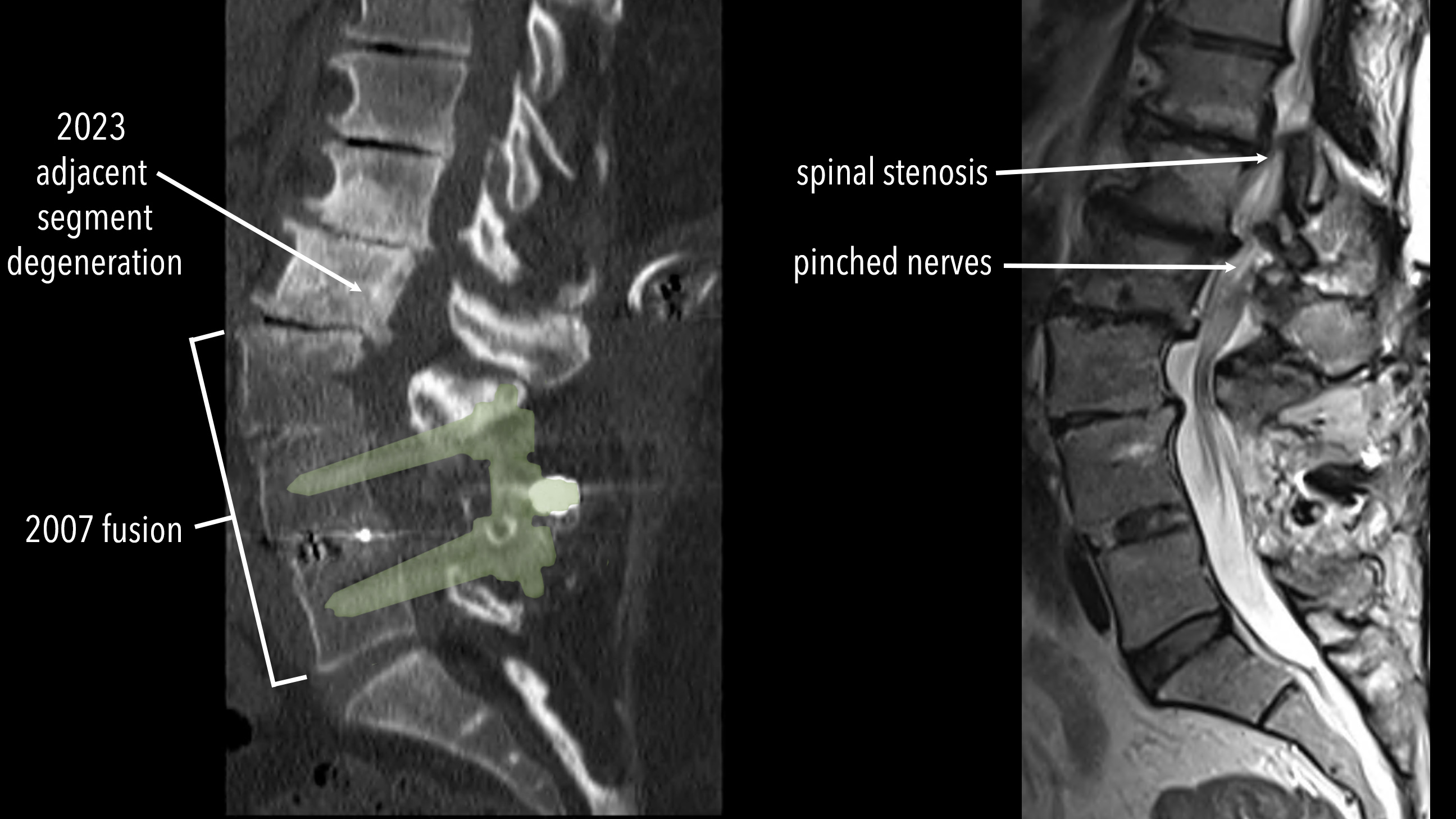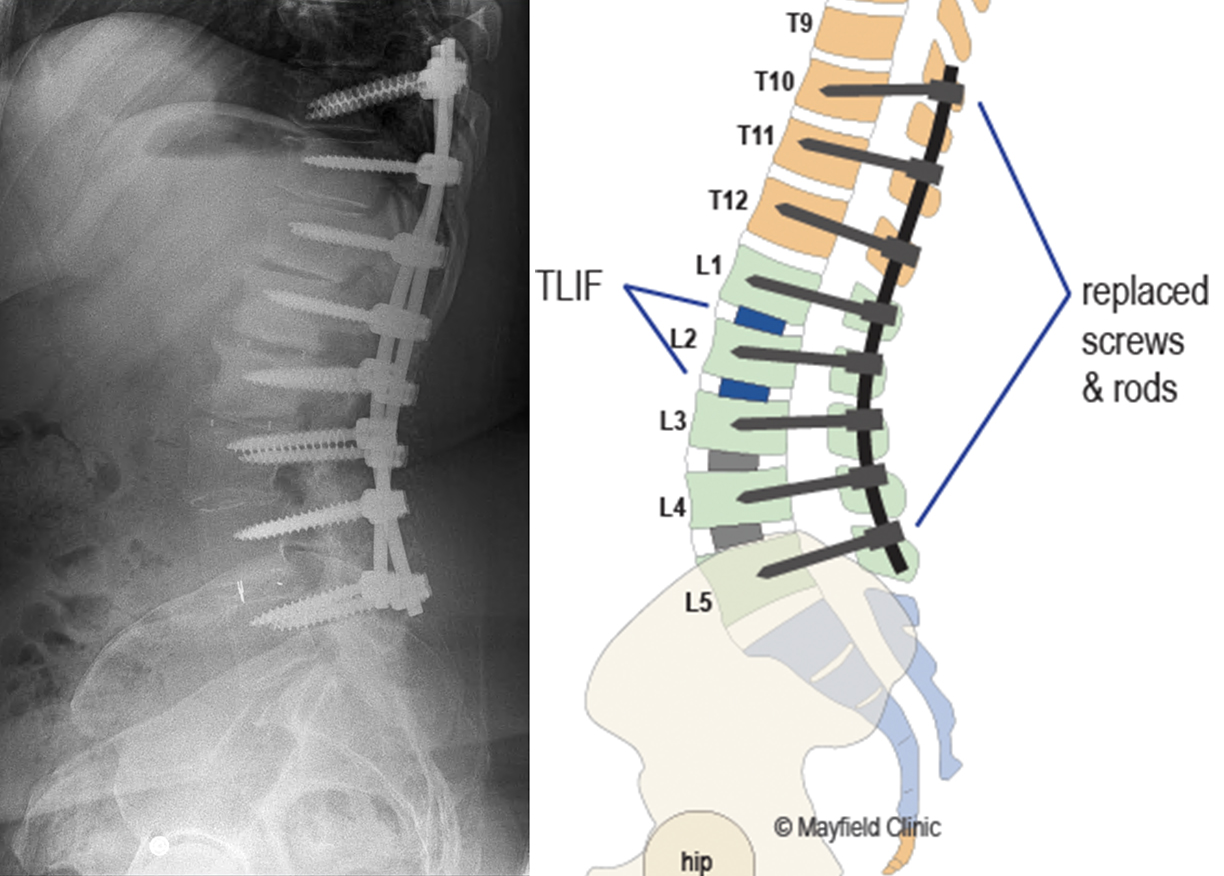
Marialice's story
Revision spine surgery
Marialice walks the walk after revision spine surgery
Marialice has given her spine quite a workout.
Her first spine surgery, in 2007, fused three vertebrae together in her lower back. The latest came in late 2023, when Mayfield Brain & Spine neurosurgeon Dr. Zachary Plummer repaired degeneration at the levels directly above the previous fusion.
In between, Marialice has had three other surgeries, including two on her neck. As someone who has played sports most her life, she believes her active lifestyle has aided her recovery. The day after her latest surgery, she was walking down the hospital hallways.
"I just have a degenerative spine, I guess," she said. "Walking is just the most fantastic thing. Before the surgery, I did not walk at all. It just hurt too much. Now, I walk whenever I can. The more you can keep active after surgery, the better off you're going to be."
Dr. Plummer says an operation above or below the surgically repaired vertebrae, called revision or adjacent segment surgery, is not unusual. Fusing the vertebrae together inevitably puts pressure on the adjacent spine levels, increasing the likelihood of additional surgery in the future. If it's needed, further surgery can come years, or even decades, after the original operation.

"The numbness and weakness on Marialice's left side clearly indicated lumbar spine degeneration, and imaging confirmed that it was immediately adjacent to the level of her original surgery," he said. "Spine care is not a one-and-done event. We are constantly monitoring patients for signs of additional damage. Even if it comes years later, revision surgery can help restore their previous level of activity."
As a veteran of spine surgery, Marialice knew that additional surgery was a possibility – and will remain a possibility going forward.
"I had a full idea of what was going to happen," she said. "I think that education helps you as a patient. You can be mentally prepared for additional surgery."
A long spine journey
Marialice remembers when the pain started in 2007. She tried all sorts of conservative measures to help, including epidural steroid injections and nerve ablation, but they didn't alleviate the pain. She eventually underwent surgery at Mayfield to fuse the vertebrae together in the L3-L5 levels of the lower back, called the lumbar spine.
"It basically gave me my life back," she remembers. "The symptoms were gone for 12 or 13 years."
But in 2019, she started feeling numbness and tingling down her left leg. There wasn't any pain in her lower back, but Marialice knew enough to know that the numbness was connected to her spine. She described it as "a thousand lit sparklers all touching off at the same time."

"I felt like we knew it was coming, and we were just trying to buy time," she said. "As time went on, my symptoms just got more and more intense."
Another lumbar surgery followed, as well as a fusion on the C4-T3 level in her neck, or cervical spine. For the lower back, she tried a spinal cord stimulator to block the pain signals to her brain, but that gave her limited relief. The tingling got more and more intense, so she returned to Mayfield and met Dr. Plummer, who had joined the practice in 2022.
"Dr. Plummer put things in a way that I could understand," she said. "At one point he said, 'We've done about all we can do short of surgery.' And I just couldn't tolerate those symptoms anymore."

Working with Dr. Bryan Krueger, another Mayfield neurosurgeon, Dr. Plummer first removed the spinal cord stimulator. He addressed the stenosis, or narrowing of the spinal canal, that was impinging on the nearby nerves. Then he fused the vertebrae together at the L1-L3 levels of Marialice's spine, immediately above the original surgery, using a technique known as a transforaminal lumbar interbody fusion, or TLIF. The final step was to stabilize a large segment of her lower back and revise her previous spinal hardware with new rods and screws from the T10 to L5 levels.
"Our objective was to not only repair the damaged area, but to stabilize Marialice's lumbar spine so that her relief from symptoms would persist," Dr. Plummer said. "Shaping a surgery that provides a global solution should allow her a more active lifestyle going forward."
As for Marialice, the numbness was gone after surgery. Looking back, she's glad she kept seeking appropriate treatment for her symptoms.
"What's the alternative?" she asks. "When people say to me, 'My toes are tingling,' or something like that, I just tell them that it's probably your spine or your nerves. Getting that taken care of, you won't regret it."
~ Cliff Peale
Hope Story Disclaimer -"Marialice's Story" is about one patient's health-care experience. Please bear in mind that because every patient is unique, individual patients may respond to treatment in different ways. Results are influenced by many factors and may vary from patient to patient.
